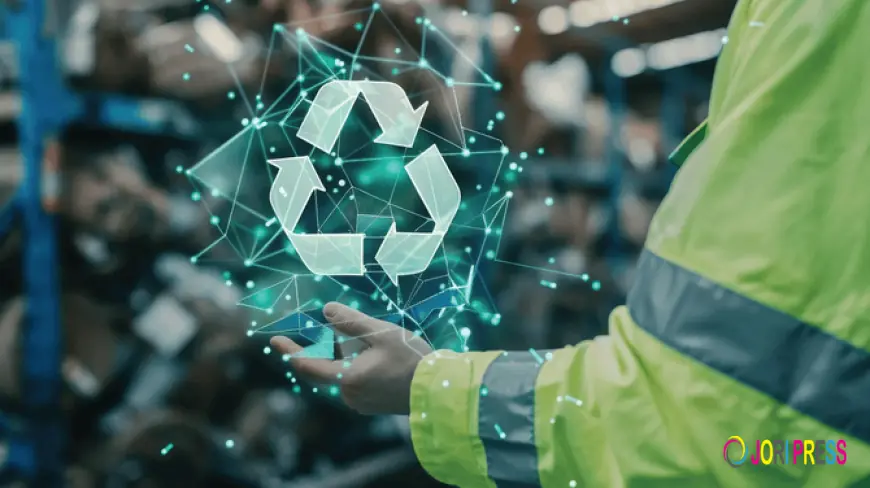Circular Manufacturing Models Influencing Global Policies
This article explores how circular manufacturing models support the circular economy through design for longevity, reverse logistics, industrial symbiosis, and resource optimization, highlighting insights from Business Insight Journal and BI Journal. Explore how circular manufacturing models drive sustainability and strengthen the circular economy for long-term business resilience and innovation.

The shift toward a regenerative economic system has intensified the global conversation around sustainable production, and circular manufacturing models have become a cornerstone of this transformation. As organizations and innovators rethink how goods are designed, produced, and reintroduced into the value chain, the circular economy emerges as more than an environmental ideal—it becomes a pathway to long-term profitability, resilience, and brand trust. Publications such as Business Insight Journal and BI Journal continue to highlight how this shift is redefining modern business strategy.
What Circular Manufacturing Models Represent in Today’s Economy
Circular manufacturing models represent a system where materials loop continuously between production, usage, and renewal. Instead of relying on linear processes that lead from extraction to disposal, circular models promote regeneration at every stage. This approach not only reduces environmental pressure but also helps businesses unlock new value streams by using resources more efficiently. Thought leaders referenced across platforms like the BI Journal often emphasize that circularity is becoming a competitive necessity rather than an optional sustainability trend.
Designing for Longevity and Reuse
One of the foundational principles of circular manufacturing is designing products that last. Whether through modular construction, repair-friendly features, or material choices engineered for durability, design for longevity allows companies to keep products in circulation for as long as possible. When products eventually reach the end of their usable life, their components can be reused, refurbished, or repurposed—extending value far beyond traditional lifecycles. As more organizations embrace deeper insights from resources such as Inner-circle the movement toward intentional design continues to accelerate.
The Strategic Role of Reverse Logistics
Reverse logistics supports circular manufacturing by enabling materials to flow back into the system. This includes product take-back programs, sorting infrastructure, and processing networks that recover components with minimal waste. As many industries face increasing regulatory and consumer pressure to manage end-of-life goods responsibly, reverse logistics becomes an essential contributor to operational sustainability.
Industrial Symbiosis and Resource Optimization
Industrial symbiosis is an advanced circular manufacturing concept where different industries share resources, energy, byproducts, and infrastructure. Waste from one facility becomes the input for another, creating a closed-loop network that minimizes inefficiencies. This synergy helps reduce carbon footprints, lower production costs, and stimulate technological innovation across sectors.
How Circular Manufacturing Models Strengthen the Circular Economy
Circular manufacturing models play a direct role in enabling the broader circular economy by closing material loops and reducing dependence on virgin resources. Their emphasis on reuse, remanufacturing, and continuous material recovery ensures that economic growth is not tied to resource depletion. As analyzed in Business Insight Journal these models encourage a systemic shift, aligning sustainability with operational excellence and long-term profitability.
Real-World Adoption and Business Implications
Global companies across electronics, automotive, consumer goods, and industrial manufacturing are applying circular strategies to achieve measurable cost savings and reduce environmental impact. These manufacturers report improved supply chain resilience, enhanced brand reputation, and new revenue opportunities through service-based business models. From leasing programs to product-as-a-service offerings, circularity reshapes how manufacturers interact with customers.
Challenges and Opportunities for Global Manufacturers
The transition to circular manufacturing does not come without complexity. Challenges include reconfiguring supply chains, securing high-quality secondary materials, and ensuring regulatory compliance across markets. Yet the benefits outweigh the barriers, especially as technological advancements make material tracking, product digitization, and smart asset management more accessible.
The Future Outlook of Circular Manufacturing
Future manufacturing landscapes will be shaped by digital integration, data analytics, artificial intelligence, and automation—all of which enhance circularity. With increasing investments in sustainable innovation and government policies supporting regenerative practices, circular manufacturing models are positioned to become standard across industries.
Conclusion
Circular manufacturing models are central to building an economy that prioritizes efficiency, resilience, and long-term value. As businesses adopt regenerative practices and innovate around product life cycles, they strengthen the foundation of the circular economy itself—promoting growth that benefits both industry and the planet.
What's Your Reaction?
 Like
0
Like
0
 Dislike
0
Dislike
0
 Love
0
Love
0
 Funny
0
Funny
0
 Angry
0
Angry
0
 Sad
0
Sad
0
 Wow
0
Wow
0











































![Introduction ✈98~[(2121)]?~[{0875}] to the Stock market courses](https://joripress.com/uploads/images/202509/image_430x256_68bf0343969fb.webp)





